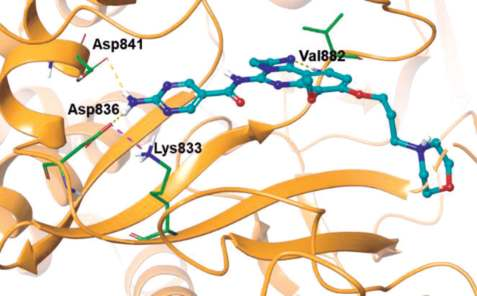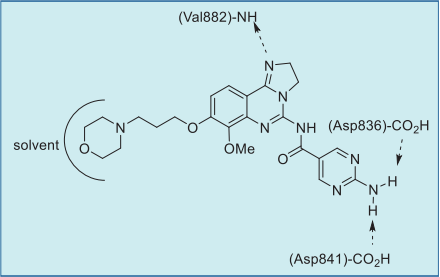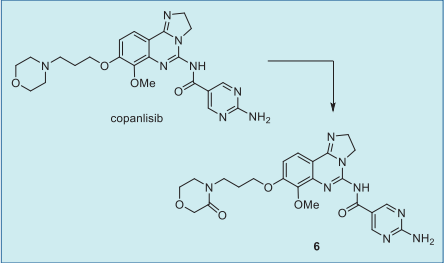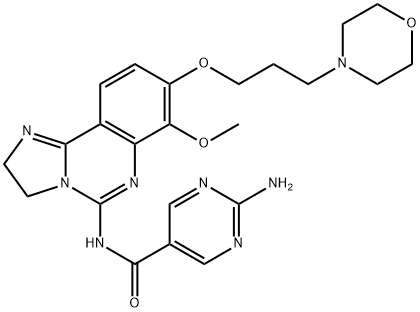Binding Mode
As shown in the co-crystal structure of
copanlisib bound to PI3Kγ, the inhibitor binds with
only one critical hydrogen bond to the amide NH of
Val882 in the adenine pocket, employing the
imidazoline N1 nitrogen (Figs. 1 and 2). In addition,
the C5 aminopyrimidine group fills the affinity pocket,
forming hydrogen bonds with two carboxylic
residues of Asp836 and Asp841 through the amino
group. Finally, the solvent exposed morpholine lies
over Trp812, presumably providing additional
attractive molecular contacts.


Uses
BAY 80-6946 is a highly selective intravenous PI3K inhibitor with potent p110α and p110δ activities in tumor cell lines and xenograft models.
Definition
ChEBI: Copanlisib is an imidazoquinazoline that is 2,3-dihydroimidazo[1,2-c]quinazoline substituted by (2-aminopyrimidine-5-carbonyl)amino, methoxy, and 3-(morpholin-4-yl)propoxy groups at positions 5, 7 and 8, respectively. It is a intravenous pan-class I PI3K inhibitor used for the treatment of relapsed follicular lymphoma in patients who have received at least 2 prior systemic therapies. It has a role as an EC 2.7.1.137 (phosphatidylinositol 3-kinase) inhibitor, an antineoplastic agent and an apoptosis inducer. It is a member of morpholines, an aromatic ether, a diether, a tertiary amino compound, a secondary carboxamide, a pyrimidinecarboxamide, an aminopyrimidine and an imidazoquinazoline.
General Description
Class: lipid kinase;
Treatment: FL (IV infusion);
Other name: BAY 80-6946;
Elimination half-life = 52 h (IV);
Protein binding = 84.2%
Pharmacokinetics
Copanlisib has poor oral bioavailability due to
low permeability and poor solubility, and therefore, it
is not suitable for an oral medication. Consequently,
it was developed as an IV drug. IV infusion of
copanlisib resulted in rapid distribution throughout
the body and a prolonged elimination half-life (52 h).
Metabolism
Copanlisib was the predominant component in
human plasma, accounting for 84% of total
radioactivity AUC, and the morpholinone metabolite
6 was the only circulating metabolite (about 5%).







